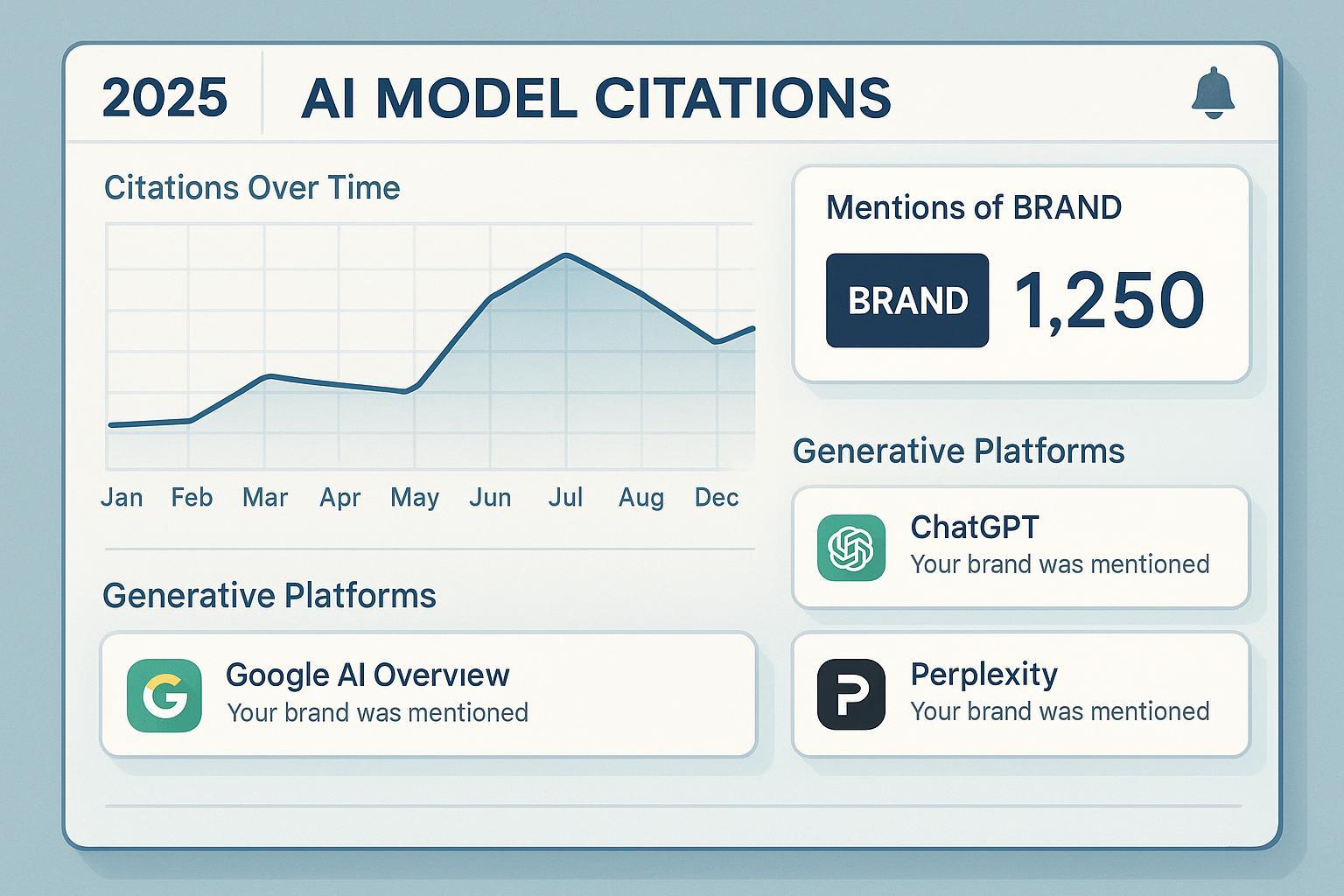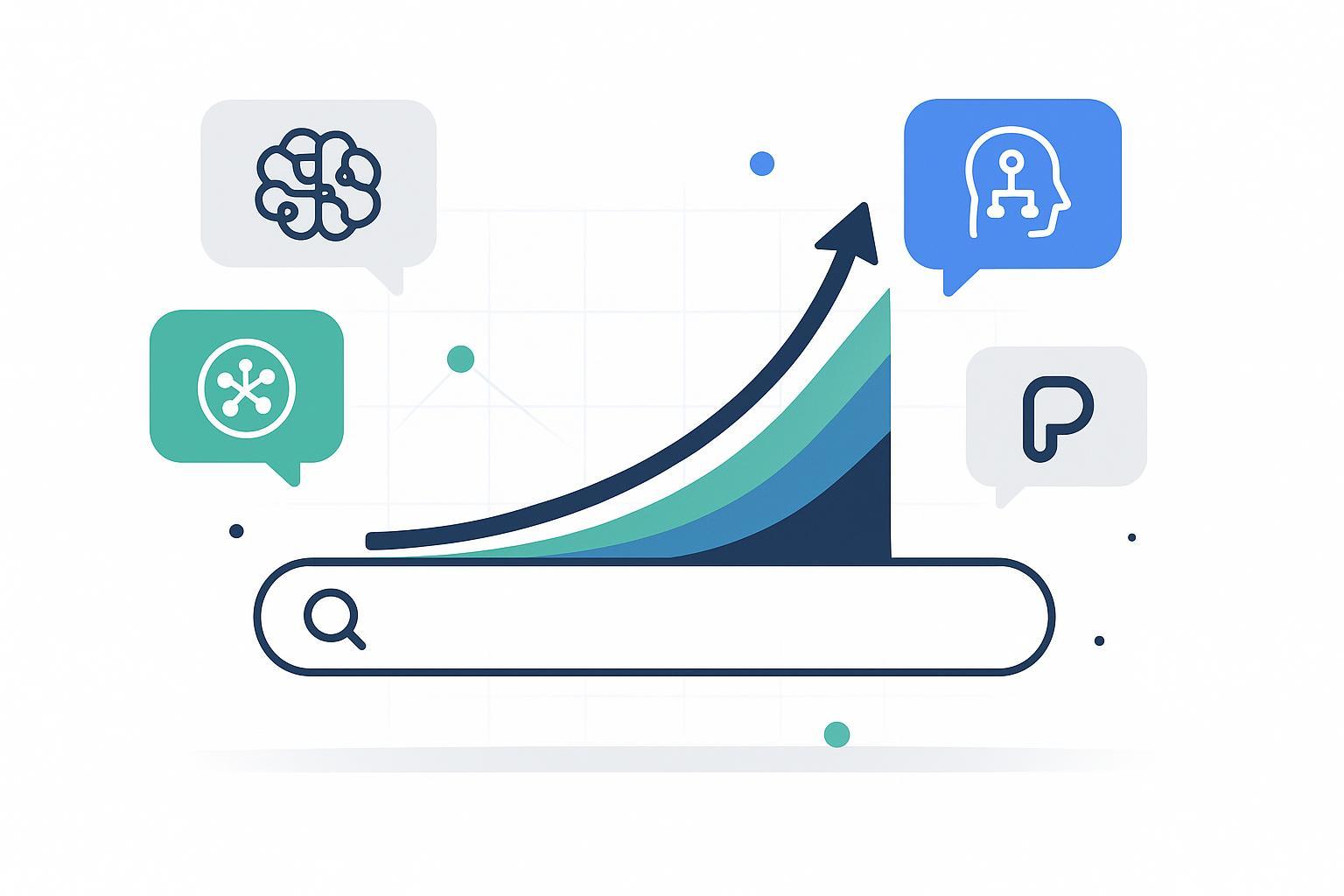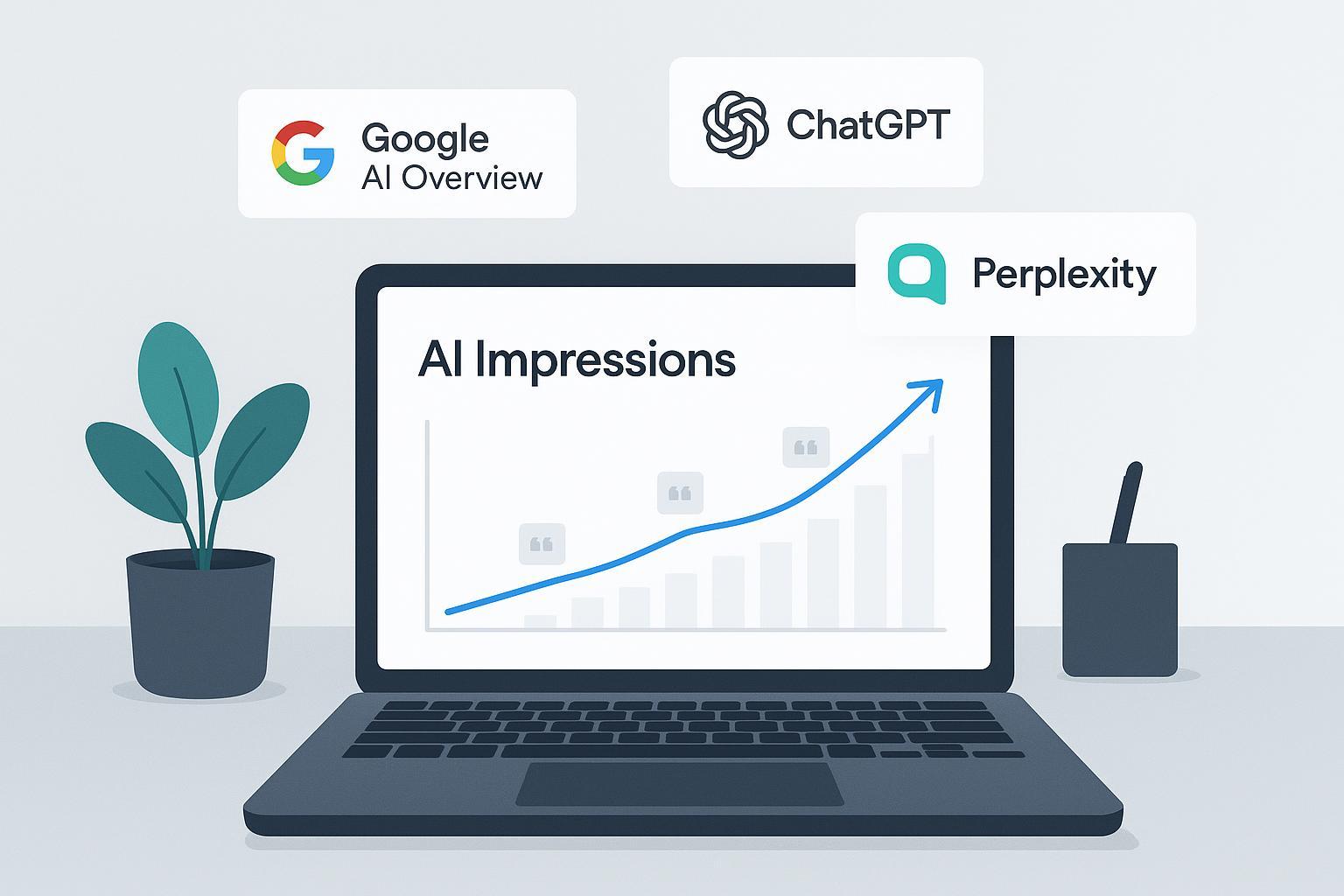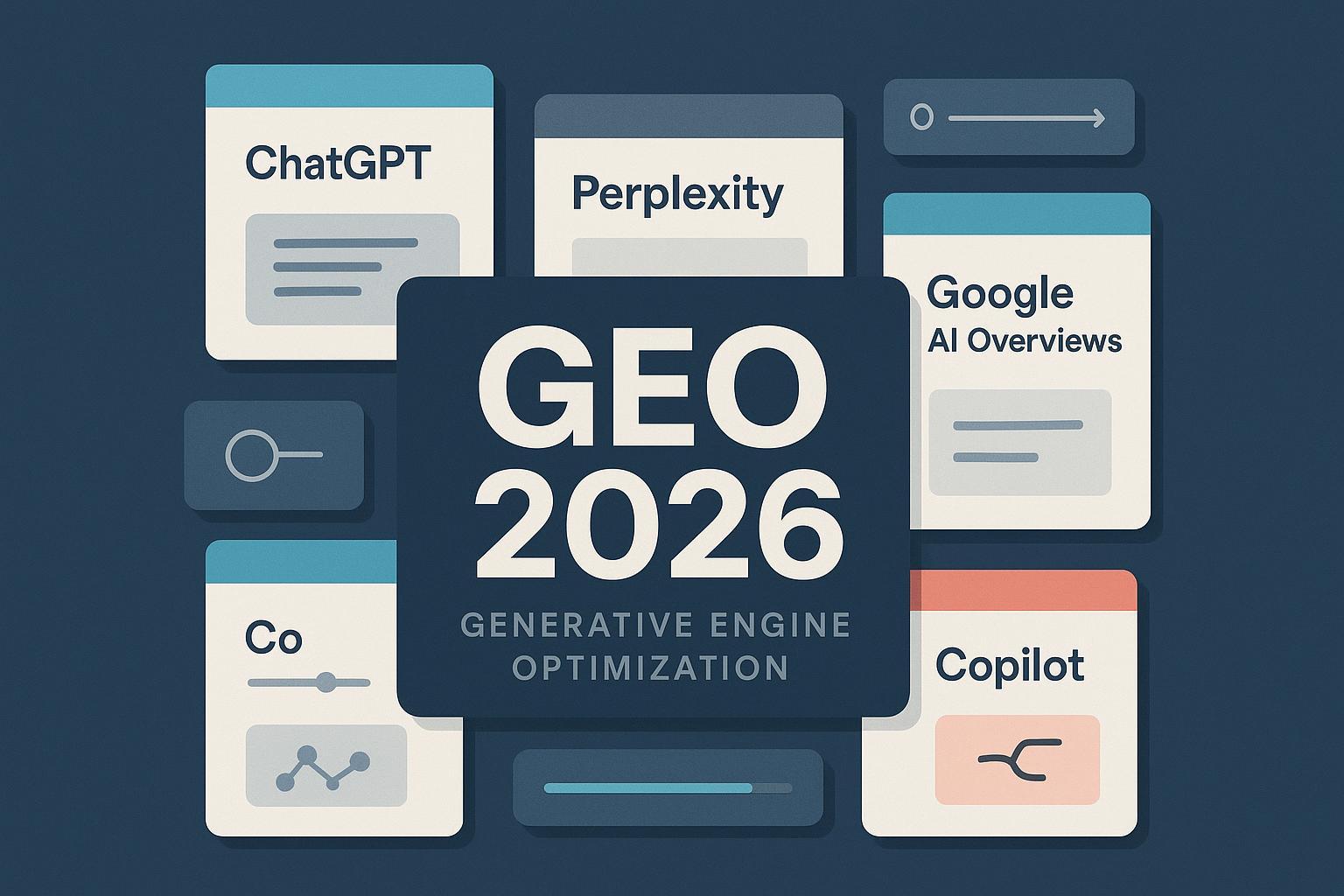How to Check if ChatGPT Cites Your Content Fairly: 2025 Step-by-Step Guide
Learn how to check if ChatGPT cites your content fairly in 2025—step-by-step workflows, practical tools, Geneo integration, and legal tips for brands.


Why Monitoring AI Citations Matters in 2025
As generative AI platforms like ChatGPT, Google AI Overview, and Perplexity shape online authority, understanding how your content is used—or cited—has become crucial for brand visibility, intellectual property protection, and strategic decision-making. While transparency has improved in 2025, AI platforms still struggle with consistent attribution, making it essential to actively monitor and verify how your brand and content appear in AI-generated outputs.
What to Expect From This Guide
- Step-by-step workflows to check if ChatGPT cites or uses your content
- Actionable advice for monitoring brand mentions and sentiment
- Troubleshooting for common pitfalls and ambiguous results
- Clear instructions to set up ongoing multi-platform monitoring
- Integration of Geneo for enterprise-grade automation and analytics
- Practical legal, ethical, and reporting tips (2025 standards)
Difficulty level: Moderate tech-savvy required
Estimated time per workflow: 15–60 minutes for manual checks; ongoing monitoring <10 minutes/day with automation
Step 1: Directly Check ChatGPT for Citations
1.1 Start With Targeted AI Prompts
- Open ChatGPT and submit prompts like “Who wrote [your article title]?”, “What’s the source for [specific fact]?”, or “Tell me about [your brand]’s approach to [topic].”
- Review AI’s response for direct reference, quote, or link to your content.
- Note: ChatGPT now often includes a “More” section or UTM-encoded link for cited sources—check these closely (PPC Land).
Verification Tip:
- Copy the citation or brand mention into a spreadsheet. Repeat prompts with slight variations to check for consistency. If your content is referenced, document the format and completeness.
Troubleshooting:
- If no citation appears, try more specific, factual prompts. If a reference seems incorrect (syndicated or wrong source), flag it for escalation (see Step 5).
Empathy Box: It’s frustrating when you know your article is widely read but ChatGPT points only to a content aggregator—this problem persists, despite improvements. Manual prompt engineering remains part science, part art in 2025.
Step 2: Use AI Content Detectors & Plagiarism Scanners
2.1 AI Content Detection Workflow
- Tools like Detecting-ai.com, SurferSEO AI Detector, and Pangram Labs AI Detector offer high-accuracy detection of AI-generated text—up to 99% with GPT-5 outputs.
- Copy suspected ChatGPT output and paste into these tools. Save confidence scores (>90% is considered highly reliable).
2.2 Plagiarism Verification
- Run results through Turnitin AI modules, Copyscape, or similar scanners. Look for match percentages and highlighted segments tied to your domain.
Practical Tip: Batch-check multiple outputs using bulk upload features or browser extensions (e.g., Sapling AI Detector’s Chrome extension).
Troubleshooting:
- False positives and negatives exist—especially when content is paraphrased. If in doubt, cross-check findings across two or more detectors.
Step 3: Set Up Ongoing Brand & Content Monitoring (Geneo Integration)
3.1 Why Ongoing Monitoring Is Game-Changing
Manual checks quickly become overwhelming and miss subtle citations or paraphrased references. Automated enterprise solutions provide speed, historical context, and sentiment insights, especially across hundreds of prompts and platforms.
3.2 How to Deploy Geneo for Multi-Platform Tracking
Geneo (Learn more) combines:
- Real-time monitoring of brand mentions/content across ChatGPT, Google AI Overview, Perplexity
- Automated alerting for new citations or mentions
- Built-in sentiment analysis (positive, neutral, negative)
- Historical tracking so you can audit trends and compare over time
- Team dashboard for multi-brand management and collaborative workflows
Geneo Setup Guide:
- Create workspace: Sign up, configure team permissions and brand keywords.
- Set frequency: Define how often you want to scan (daily, weekly, etc.)
- Automate alerts: Enable notifications for new citations or sentiment shifts.
- Review dashboard: Analyze KPIs, share-of-voice, sentiment graphs, and historical citation records.
- Content optimization: Leverage AI-driven tips to boost AI search visibility.
Example: Brands have boosted their AI platform visibility by 30% and improved positive sentiment by 25% in one month using Geneo.
Alternatives:
- For broader coverage (including Gemini, Claude), try tools like KAI Footprint, Quid, or Semrush GEO. Geneo currently focuses on leading platforms but outperforms in actionable brand/citation analytics.
Step 4: Troubleshooting, Escalating, and Solving Common Problems
4.1 Common Issues & Solutions
| Problem | Why It Happens | Solution/Workaround |
|---|---|---|
| No citation or “hallucinated” link | Model error, syndication bias | Escalate prompt, report to OpenAI, manual verification |
| Brand misattribution | Syndicated reference | Flag for correction, edit public info, use metadata |
| Old/outdated results | Indexing lag | Re-run queries; refresh monitoring settings |
| Multiple platform inconsistency | LLM database drift | Batch prompt across LLMs, track patterns |
| Sentiment inaccuracies | AI misclassification | Layer human/manual review, adjust keyword sentiment |
4.2 Escalation Pathways
- Manual review: Always verify a questionable output yourself.
- Report to platform: Use support forms (OpenAI, Google, etc.) to report citation errors—request correction or removal.
- Request legal review: If serious, consult copyright/IP counsel and document findings. Refer to Wiley Law and LOC.
Empathy Box: Don’t be discouraged! Many brands face recurring misattribution—persistent, data-backed reporting and prompt revisions often yield results.
Step 5: Monitor Brand Mentions Across Multiple AI Platforms
In 2025, brand visibility hinges on multi-platform presence. Don’t limit yourself to ChatGPT—track mentions across:
- Gemini (Google), Claude (Anthropic), Bing Copilot, Perplexity
Checklist:
- Frame platform-specific prompts (“How does [brand] solve [problem]?”)
- Use monitoring tools (Geneo, KAI Footprint, Quid, Semrush GEO) for cross-platform tracking
- Aggregate data in weekly/monthly reports
- Benchmark share-of-voice and citation depth by platform
Adaptation Tip: Geneo covers top LLMs (ChatGPT, Perplexity, Google AI Overview) and will expand coverage as new API integrations launch. For now, supplement with manual checks or competitor platforms for Gemini/Claude.
Step 6: Legal, Ethical, and Best Practice Framework (2025)
- Copyright: AI-assisted works with substantial human input remain protectable (Wiley Law). Pure AI outputs: public domain.
- Attribution: Push for clear citation; request corrections if attribution errors occur (Digital Content Next).
- Contracts & Licensing: Use written agreements to secure rights; insist on transparency clauses for AI content reuse (Art Law).
- Opt-out Controls: Monitor industry progress and deploy robots.txt or metadata tags to limit AI scraping where possible.
- Reporting & Enforcement: Document findings and escalate when necessary (USC Law).
Resource Box: Find legal templates and reporting checklists in the Geneo Resource Hub.
Step 7: Operational Templates, Checklists, and Batch Verification Tips
- Weekly AI Citation Checklist
- Run prioritized prompts on ChatGPT, Perplexity, Bing Copilot, Gemini, Claude
- Log citation results for each
- Flag discrepancies
- Feed results into Geneo or chosen dashboard
- Set alerts for major sentiment shifts or new brand mentions
- Verification Table
| LLM Platform | Prompt Used | Citation Found | Sentiment | Action Item |
|---|---|---|---|---|
| ChatGPT | “Who wrote…?” | Yes/No | +/–/0 | Flag/report/update |
| Gemini | “Source for…” | Yes/No | +/–/0 | Manual check |
| Perplexity | “Brand stance?” | Yes/No | +/–/0 | Automate alert |
- Sample Batch Prompts
- "Which brands lead in [industry] for [topic]?"
- "Summarize [brand]’s impact on [field]."
Step 8: Closing, Key Takeaways & Next Steps
- AI citation transparency is improving, but gaps remain—using prompt-based and tool-driven checks is essential.
- Ongoing monitoring with Geneo provides enterprise-grade solutions for tracking, analyzing, and improving your brand’s AI visibility—including sentiment and historical benchmarking.
- Tackle issues proactively: batch verify, escalate errors, leverage reporting workflows, and stay updated on emerging industry standards.
- Legal frameworks are evolving; be vigilant in using available opt-out, reporting, and contract-based protections.
Ready to automate your AI brand monitoring? Try Geneo for free—empower your team with real-time, actionable insights, cross-platform tracking, and industry-leading sentiment analysis.
Peer Recommendation: “Geneo gave us granular control and visibility on brand mentions across ChatGPT and other AI channels—our reporting efficiency improved overnight.”
If you have questions or real-world brand monitoring stories, share them in the comments, or contact the Geneo team for custom guidance. Good luck on your quest for fair AI citations and brand equity in 2025!





